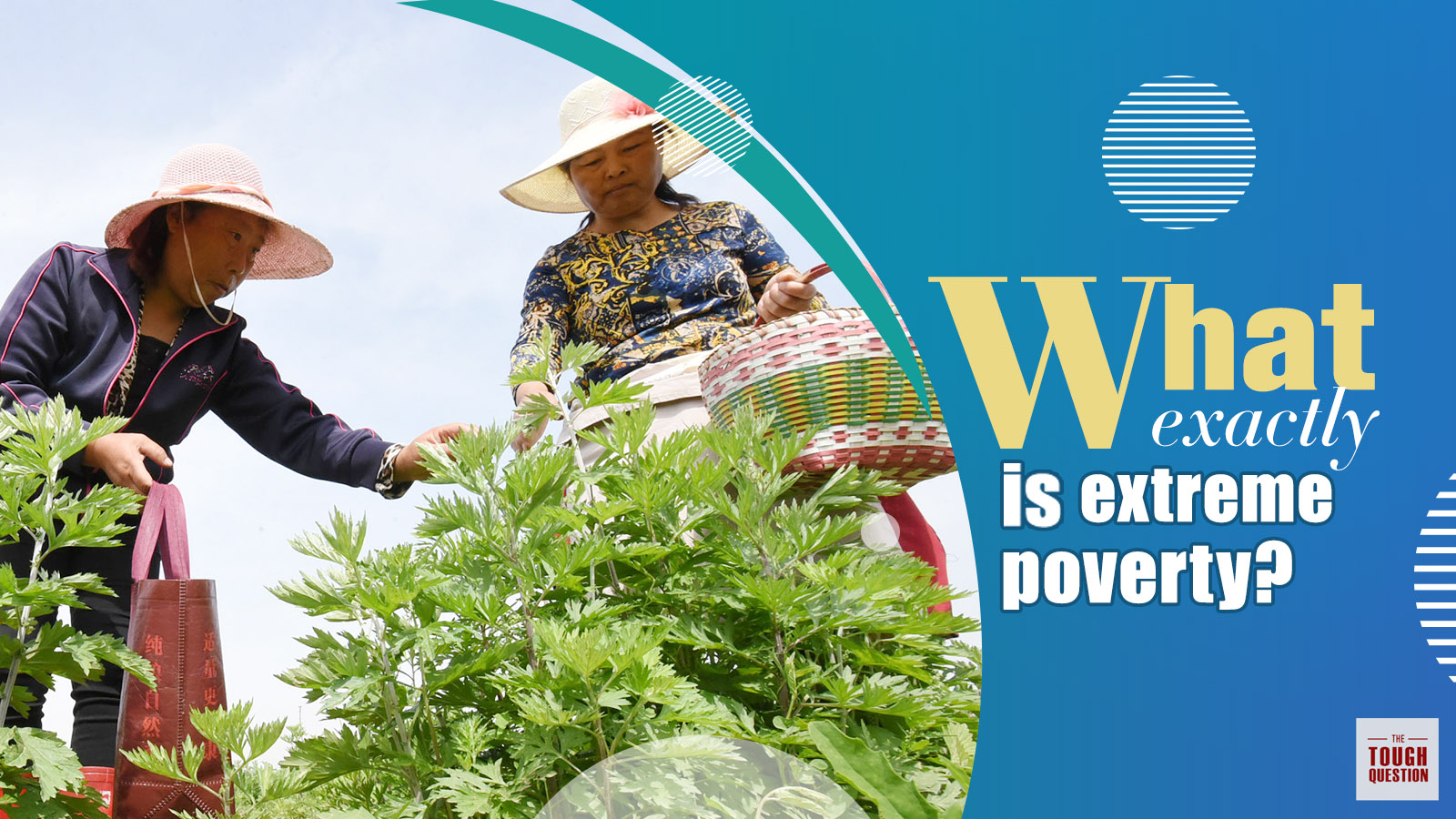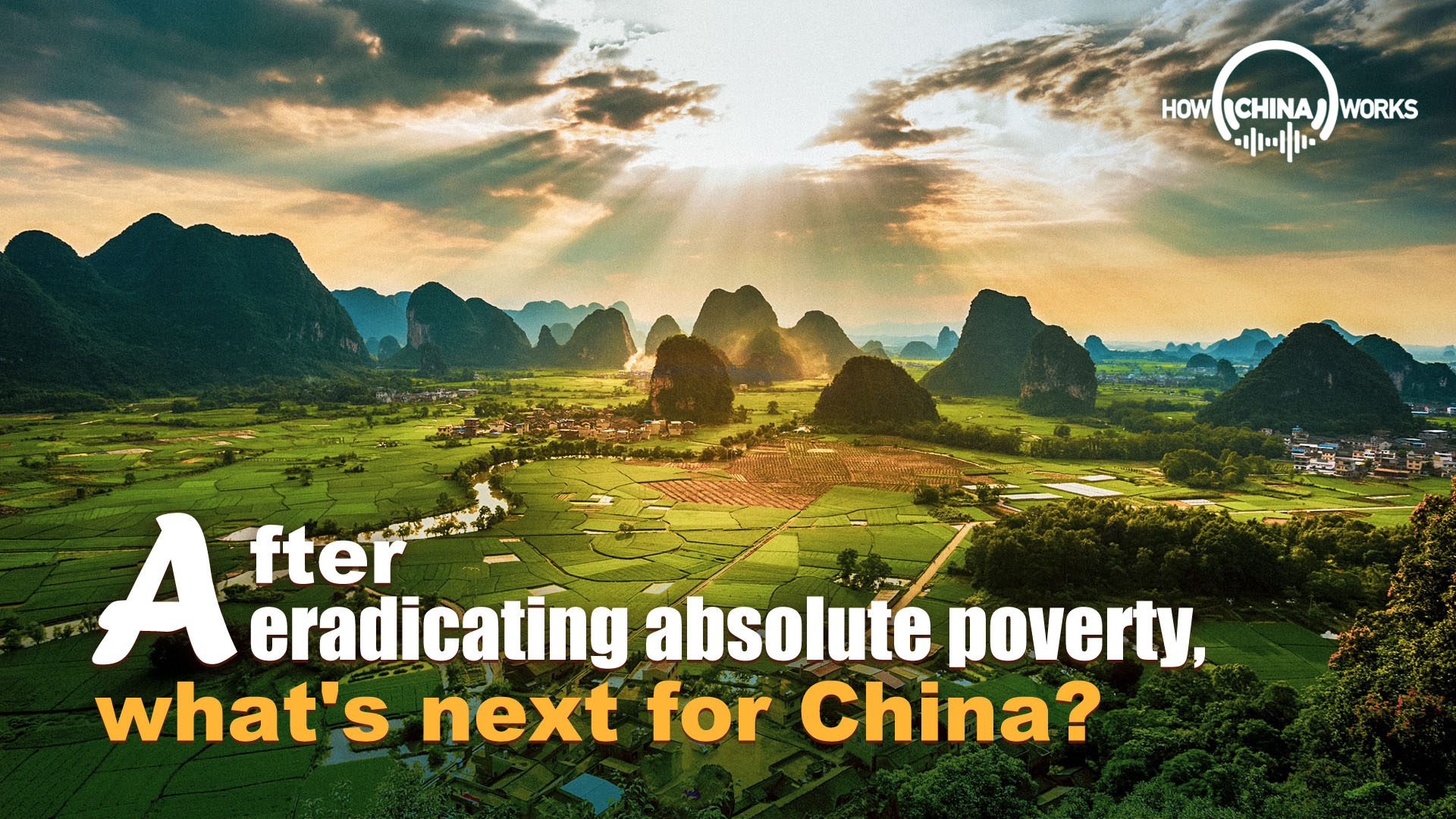
With Chinese President Xi Jinping announcing the eradication of absolute poverty at a national commendation conference on February 25, China has declared a "complete victory" in its fight against poverty.
It was a miracle accomplished 10 years ahead of the schedule set out in the United Nations' 2030 Agenda for Sustainable Development, but President Xi said it is not "the finish line," instead, it is "the starting point of a new life and new endeavor."
At the moment of starting a new journey, it is time to review what China has done to eradicate absolute poverty while highlighting China's new focus.
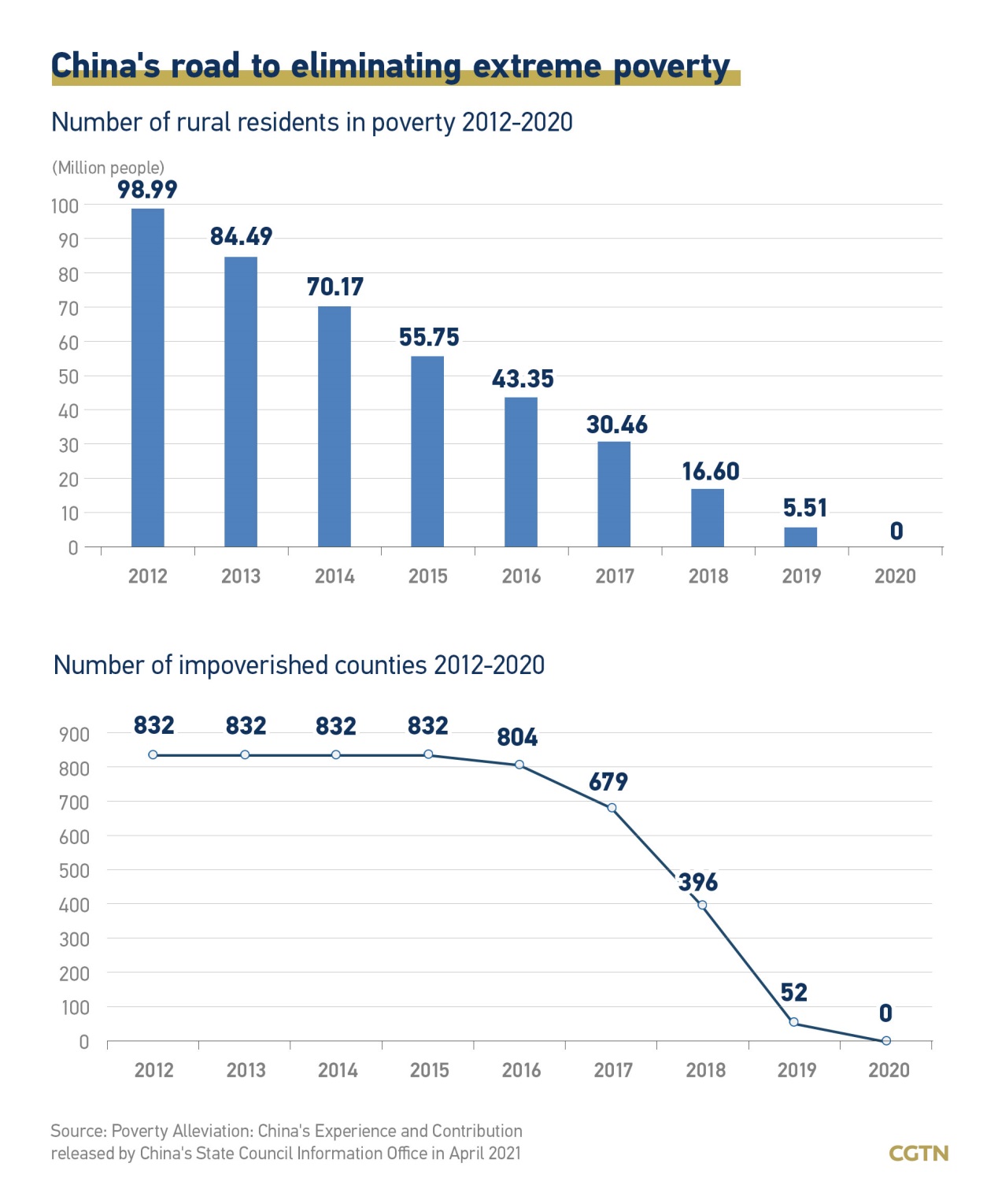
A miracle made in eight years
Though poverty has plagued China for thousands of years, the idea of applying "targeted poverty alleviation" in the fight against poverty was not brought up until November 2013 when President Xi took an inspection tour in central China's Hunan Province.
To ensure policy efficiency, China explored a slew of targeted and scientific alleviation measures, sending officials to impoverished regions to identify actual impoverished people and guide each household with bespoke poverty relief plans based on needs.
Thanks to the strategy, China has accomplished a "miracle that will go down in history," by successfully lifting the final 98.99 million rural residents living under the current poverty line out of poverty in eight years. A total of 832 counties and 128,000 villages were removed from the poverty list.
"No country has been able to lift hundreds of millions of people out of poverty in such a short time," President Xi claimed proudly, adding the country has made great contributions to global poverty alleviation.
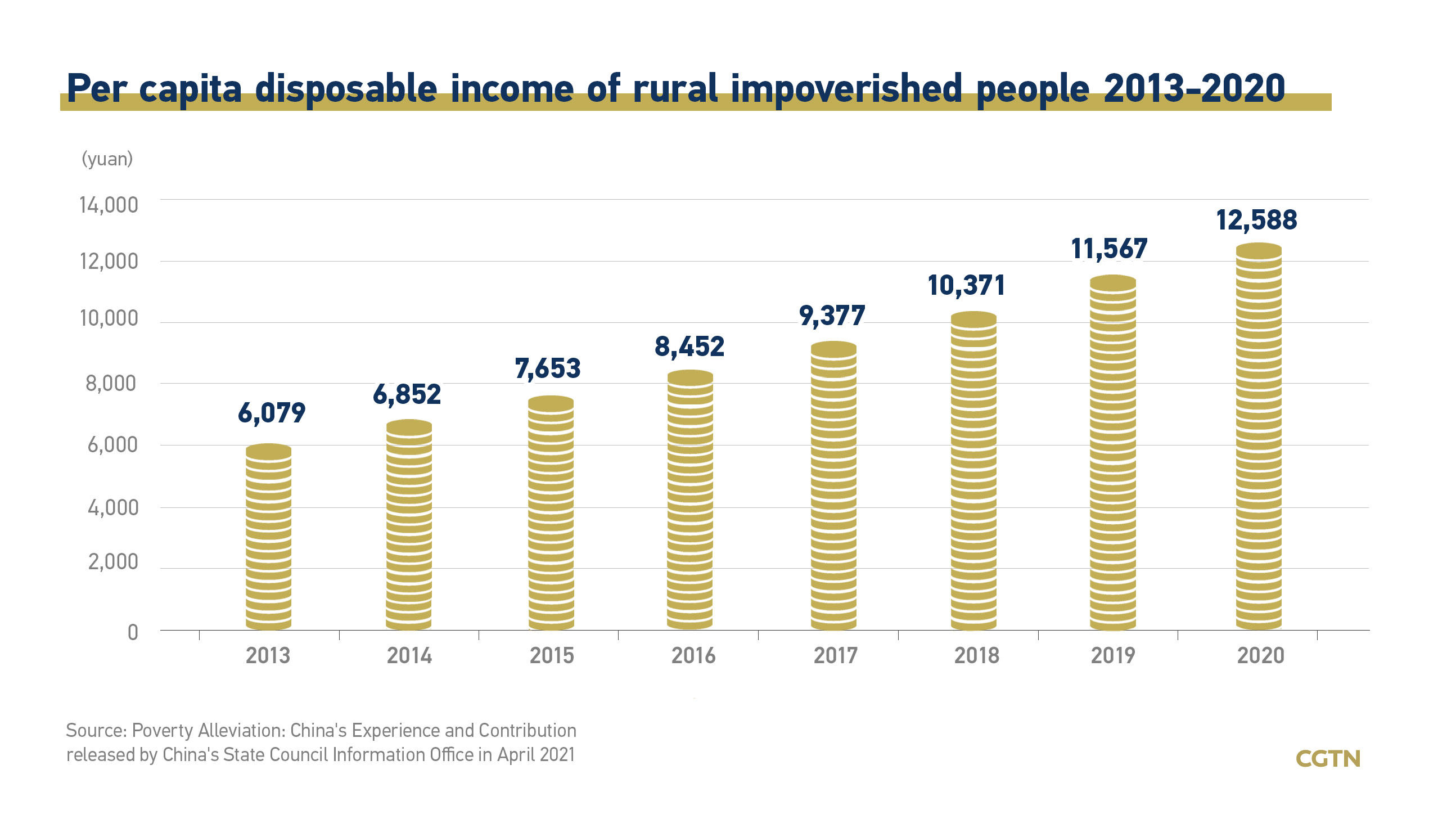
A new journey ahead
Shaking off absolute poverty is a miracle, but this fight is by no means over.
According to Xi, focus of next stage is to foster "rural vitalization" by consolidating poverty alleviation achievements and to pursue common prosperity while building a modern socialist country.
On the same day of Xi's announcement of the eradication of absolute poverty, China established a new government body for the promotion of rural vitalization, signaling the country's policy shift from poverty alleviation to rural vitalization.
Rural vitalization, in short, means higher incomes, better facilities and improved living conditions for the rural population. To reach the goal and realize a smooth transition, the government puts its emphasis on agricultural modernization.
Embodied in the 14th Five-Year Plan (FYP) as a top priority, the idea ensures a stable supply of grain, which, not only increases income for farmers, but also improves food security with high-quality agricultural products.
Some of the measures to advance agricultural modernization have already been implemented.
Large agricultural machinery and drones are becoming increasingly universal in farming to liberate farmers from heavy manual work while effectively improves grain output. Through intelligent management platforms, farmers can better access to agricultural know-how and realize a 24-hour monitoring on the growing situation of the crops.
With the help of modern technologies and scientific guidance, farmers can develop high-quality characteristic agriculture based on local conditions. While the modern seeding and irrigation system together with improved seeds help increase the yield per unit area so as to reach the country's annual grain output goal of over 650 billion kilograms.
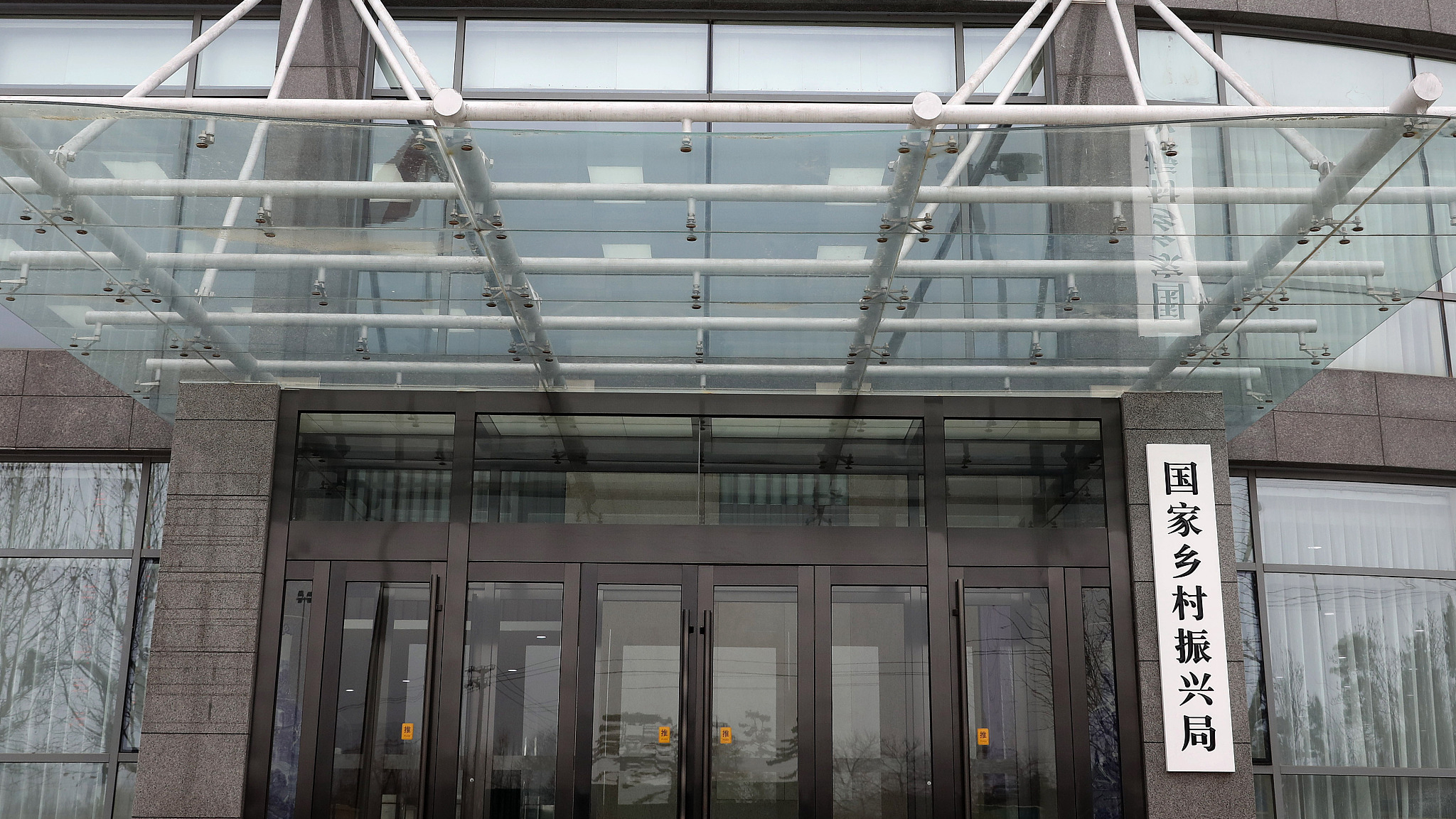
The newly-established national administration for rural vitalization in Beijing, capital of China, March 3, 2021. /CFP
From the perspective of policy-making, China also highlighted rural vitalization in several documents with specific plans to realize the transition. China's "No. 1 central document" for 2021 is one of the good examples.
Released on February 21, the document sets a five-year transition period for counties that have shaken off poverty to consolidate the achievement and then gradually shift their focus to comprehensively promoting rural vitalization.
Read more:
Graphics: China ushers in rural vitalization following victory in poverty alleviation
To ensure a stable supply of grain to feed the 1.4 billion people in China, the document draws a red line of the total arable land which should be no less than 1.8 billion mu (120 million hectares) during the 14th FYP period (2021-2025) and reiterated the government's prohibition on illegal occupation of arable land.
Calling for accelerating modernization in agriculture and rural areas, the document also outlines a plan which requires the basic completion of rural infrastructure facilities construction by 2025.





